
Horseshoe Park on a snowy day, Rocky Mountain National Park / NPS-John Marino
Happy New Year! Are you ready for more national parks quiz and trivia pieces from the Traveler? Let’s start the New Year out right with the first quiz for 2022 focusing on January notables: Pinnacles, Wind Cave, and Rocky Mountain national parks were all established in January. See how much you know about these national parks before checking the answers at the bottom of the page.
1. A visit to Rocky Mountain National Park during the winter will see you tromping through thick cushions of snow. True or False: Snow is not white.
a) True
b) False
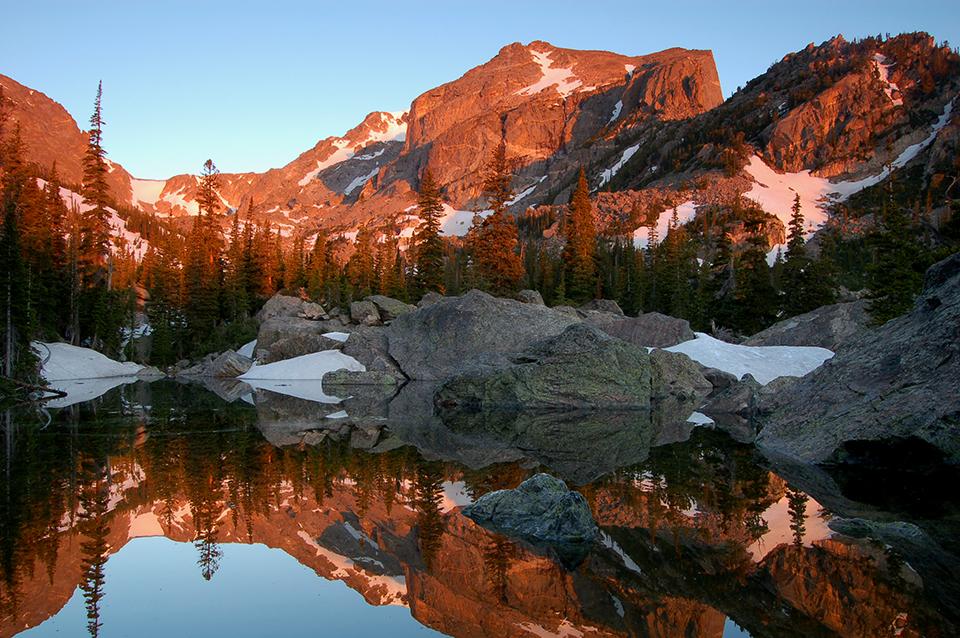
Hallett Peak reflected in Lake Haiyaha at dawn, Rocky Mountain National Park / NPS-Debra Miller
2. Within Rocky Mountain National Park’s boundaries are ____ mountain peaks over 12,000 feet high.
a) 32
b) 77
c) 108
d) 59
3. There are ___ species of fish in Rocky Mountain National Park.
a) 6
b) 11
c) 19
d) 23

Visitors on the Ute Trail, Rocky Mountain National Park / National Park Service
4. There are several hundred miles of trails in Rocky Mountain National Park, and most can be associated with three broad historical themes: first trails, recreation and tourism, and ___.
a) Naturalistic design
b) Rustic design
c) Landmark design
d) Keyhole design

Talus cave, Pinnacles National Park / National Park Service
5. At Pinnacles National Park are caves of a different sort from the limestone caves you might encounter at Carlsbad Caverns or Mammoth Cave national parks. Known as talus caves, they form via a mechanical process whereby rubble and huge boulders fall off of steep sides into canyons. Some of the boulders form roofs, thus creating the talus cave. Talus, or boulder caves, are an example of:
a) Primary caves
b) Eolian caves
c) Pseudokarst caves
d) Corrasional caves
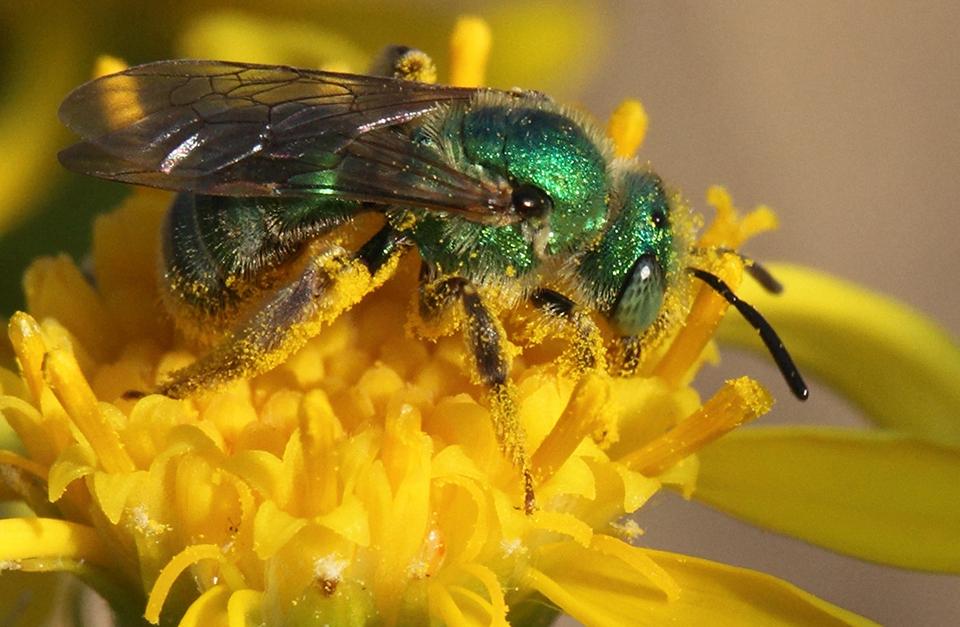
Green bee, Pinnacles National Park / National Park Service
6. Pinnacles National Park is home to almost ____ species of bees.
a) 200
b) 500
c) 400
d) 100
7. It’s pretty dry at Pinnacles National Park, and summers are quite hot. This hasn’t stopped _____ species of moist-skinned amphibians from calling the park home.
a) 5
b) 12
c) 8
d) 3
8. True or False: Wind Cave was the second cave to be designated a national park, after Carlsbad Caverns National Park.
a) True
b) False

Can you name this cave formation at Wind Cave National Park? NPS-Ken Gau
9. Look at the image above. This is a rare formation seen on the ceiling of Wind Cave. It’s known as:
a) latticework
b) zigzag calcite
c) boxwork
d) honeycomb calcite
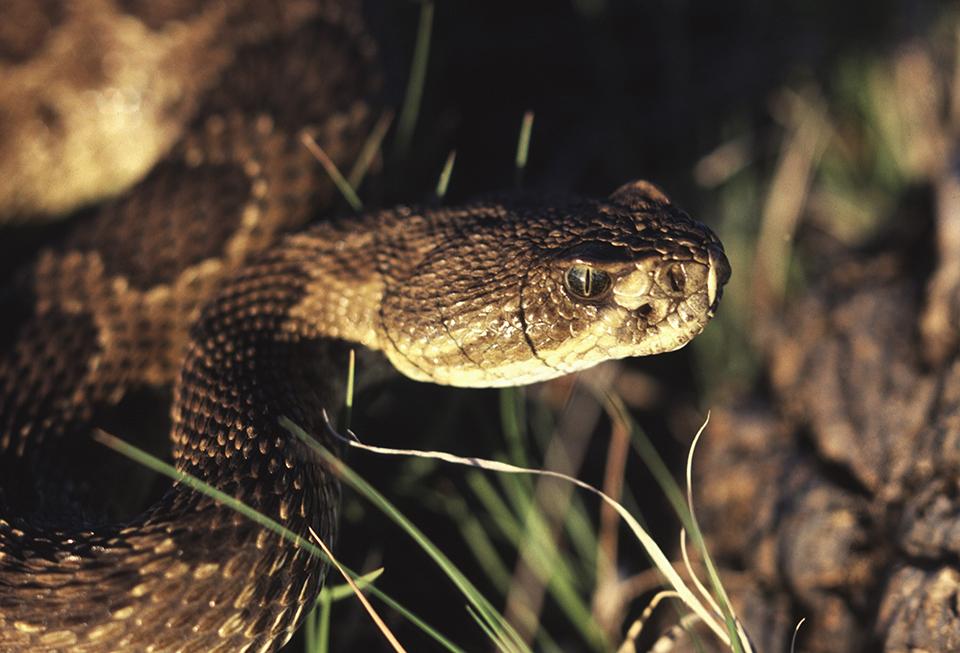
Eek! A snake! Wind Cave National Park / National Park Service
10. How many venomous snakes are found in Wind Cave National Park?
a) 1
b) 2
c) 3
d) 4
Trivia
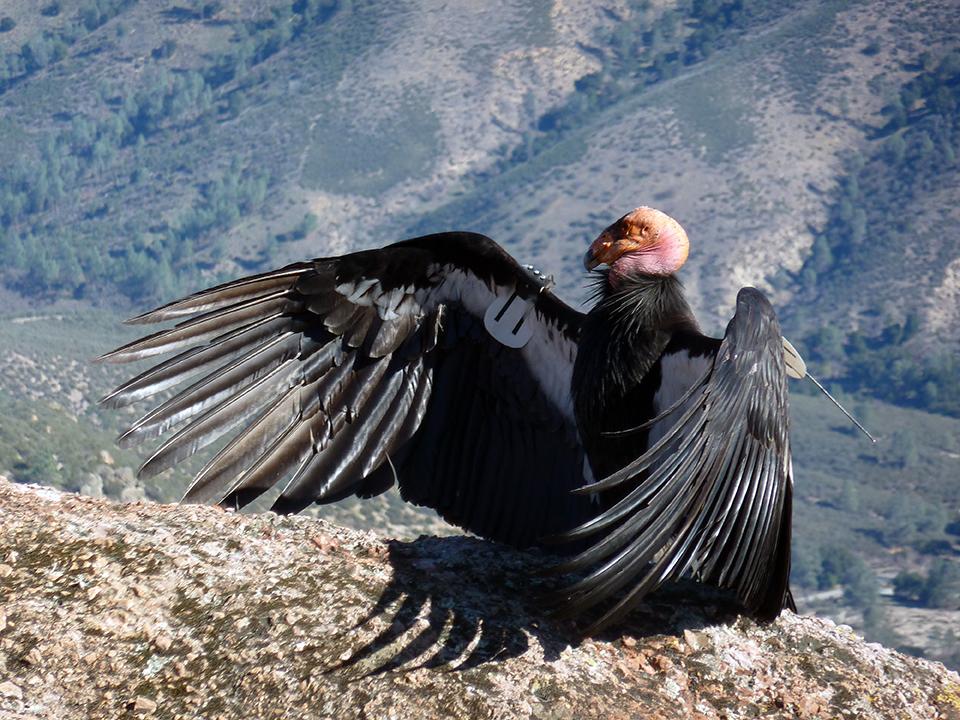
A California condor sunning itself, Pinnacles National Park / National Park Service
During a visit to Pinnacles National Park, you might be lucky enough to see a California condor soaring high above. “Pinnacles National Park is the only NPS unit that manages a release site for captive bred California condors. Juvenile condors are transferred to Pinnacles from captive breeding facilities (Los Angeles Zoo, San Diego Zoo Safari Park, Oregon Zoo, and World Center for Birds of Prey) when they are approximately 1.5 years old. They are then placed into a flight pen in a remote area of the park and allowed to acclimate to their new environment for at least 2 months. During this time, park biologists regularly observe the juveniles to ensure they are displaying normal behavior. The young birds are also able to meet the rest of the flock though the flight pen mesh, when the curious wild condors come to check out the "rookies". Before release, the juveniles are outfitted with radio transmitters and vinyl ID tags. Park biologists continue to closely monitor the juveniles’ behavior as they take their first flights in the wild, ensuring they find appropriate roost and feeding sites.” To learn more about the Condor Recovery Program, click here.

Getting directions, Wind Cave National Park / NPS-Tom Farrell
During a visit to Wind Cave National Park, you might come upon a herd of bison (above ground, of course). “Wind Cave, also called Oniya Oshoka or Maka Oniye, is a significant place in the Lakota tradition. In Lakota oral tradition, not only were the first humans born from the cave, but the first bison came from the cave as well. This oral tradition highlights the close connection that plains tribes had, and continue to have, with bison.”
“In 1800, it was estimated there were 40 million bison, by 1883, there were few wild bison in the United States - most were in Yellowstone National Park. By 1900, there were less than a thousand left in North America. The majority of the forty million animals were killed in a fifty-five year period, beginning in 1830. Many people denounced the slaughter; few did anything to stop it. Fortunately, a small, devoted group of conservationists managed to save a few hundred. In 1913, the American Bison Society sent 14 bison from the New York Zoological Gardens (now the Bronx Zoo) to Wind Cave. An additional six bison were sent to the park in 1916 from Yellowstone National Park. It is from these bison that Wind Cave's herd is descended from.”
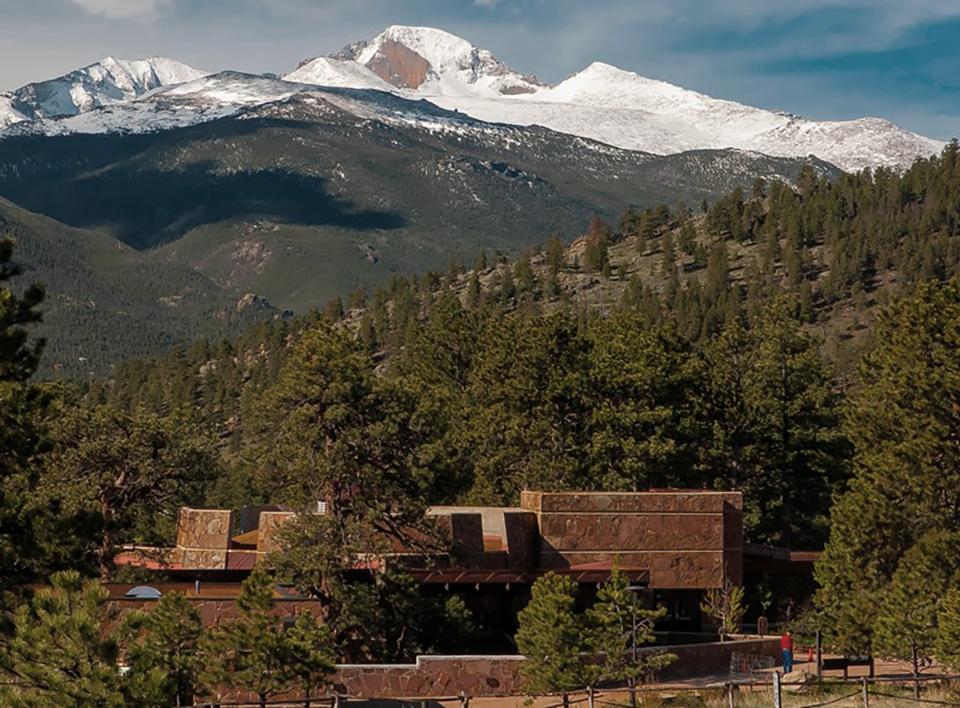
Beaver Meadows Visitor Center, Rocky Mountain National Park / National Park Service
“In January 2001, the Secretary of the Interior designated the Beaver Meadows Visitor Center [in Rocky Mountain National Park] a National Historic Landmark, the highest historic designation reserved for just 2400 properties across the nation at the time. Built in 1967, it is nationally significant for its contribution to the National Park Service Mission 66 program and for its embodiment of modern National Park Service architecture. Mission 66 was a park building program that began in 1956. Its goal was to transform the National Park Service to meet postwar conditions, including modernizing visitor facilities. Beaver Meadows Visitor Center also embodies National Park Service modern architecture. Tom Casey of Taliesin Architects, a design firm started after Frank Lloyd Wright's death in 1959, designed the building. It exemplifies Wright's belief in organic architecture, which attempts to integrate a building into its surroundings. Taliesin Architects, therefore, continued the tradition of rustic design in Rocky Mountain National Park--utilizing modern materials--into the 1960s.” To learn more about the historic buildings of this park, click here.
Answers
1a True
According to a post on Rocky Mountain National Park’s Instagram site @rockynps, snow is translucent, not white. “Snow is a bunch of individual translucent ice crystals arranged together. When light enters snow, the ice crystals bounce all the light frequencies around, so it comes back out of the snow. We see snow as white because the ‘color’ of all the frequencies in the visible spectrum combined, is white. Snow also reflects ultraviolet light, increasing your risk for sunburn. Remember to wear sunglasses and sunscreen while visiting this national park” Actually, remember your sunglasses and sunscreen when you visit any snowy unit within the National Park System.
2b
There are 77 mountain peaks over 12,000 feet high within the boundaries of Rocky Mountain National Park. And, speaking of being high, this national park is “one of the nation’s highest national parks, and the Alpine Visitor Center also sits at the highest elevation of all National Park Service sites.
3b
There are seven native species of fish and four exotic species of fish for a total of eleven species “that now inhabit the aquatic systems of the park.” To learn more about the fish of Rocky Mountain National Park, click here.
4a
“The third category is National Park Service naturalistic design, which focuses on professionally-designed trails. Both engineers and landscape architects planned trails in Rocky following standards established by the National Park Service. There was both an aesthetic component and technical component. The aesthetic component required the use of local materials such as rock, wood, and dirt to harmonize with the local environment. For example, bridges should use logs the same diameter as the trees in the adjacent forest. The technical component required a 15% maximum grade, 3-4 feet width, and sustainability through the use of stone steps, log checks, and log or stone culverts. Both the National Park Service and the Civilian Conservation Corps built naturalistic design trails, such as the East Inlet Trail.” To learn more about these historical trail themes, click here.
5c
Pseudokarst caves form through mechanical processes rather than the chemical dissolution of bedrock that occurs in rocks like limestone. To learn more about talus caves in the national parks, click here.
6c
Pinnacles National Park is home to almost 400 species of bees. “Bee diversity at Pinnacles ranks among the highest known anywhere on Earth. The bees here range in size from a sesame seed to an almond. They may be black, brown, bronze, metallic green or blue, or striped yellow and black. Some are social, working together as a hive to build a nest. But most are solitary, with each female building her own nest. Many visit flowers to collect pollen to feed their young, but about one in six species are cleptoparasites, meaning that they lay their eggs in the nests of other bee species. After the cleptoparasite young hatch, they eat the pollen intended for the other bee’s young.” To learn more about the bees in this national park, click here.
7c
“…Eight species of these moist-skinned creatures live here in this land of hot, dry summers and only sixteen inches of rain per year.” To learn more about the amphibians living at Pinnacles, click here.
8b False
Wind Cave was the first cave to be designated as a national park.
9c
“Boxwork is found in small amounts in other caves, but perhaps in no other cave in the world is boxwork so well-formed and abundant as in Wind Cave. Boxwork is made of thin blades of calcite that project from cave walls and ceilings, forming a honeycomb pattern.” To learn more about boxwork and its formation, click here.
10a
“The only venomous snake found in the park is the prairie rattlesnake.” To learn more about the reptiles and amphibians that call Wind Cave National Park home, click here.
References
In addition to the information found within each NPS.gov site for these national parks, the following references were also used.
Amber Share, Subpar Parks, 2021, Penguin Random House LLC
Emily Hoff & Maygen Keller, Scenic Science of the National Parks, 2020, Ten Speed Press
https://www.doi.gov/blog/7-things-you-didnt-know-about-rocky-mountain-national-park
Note: Different websites may have different national park establishment dates, so, I used this NPS publication as the standard.



Add comment